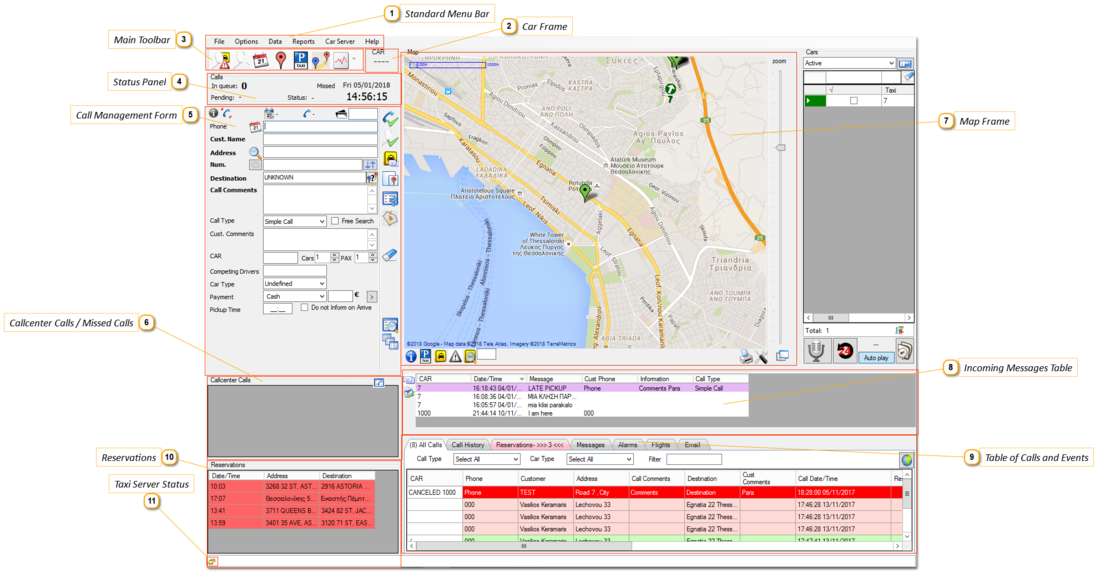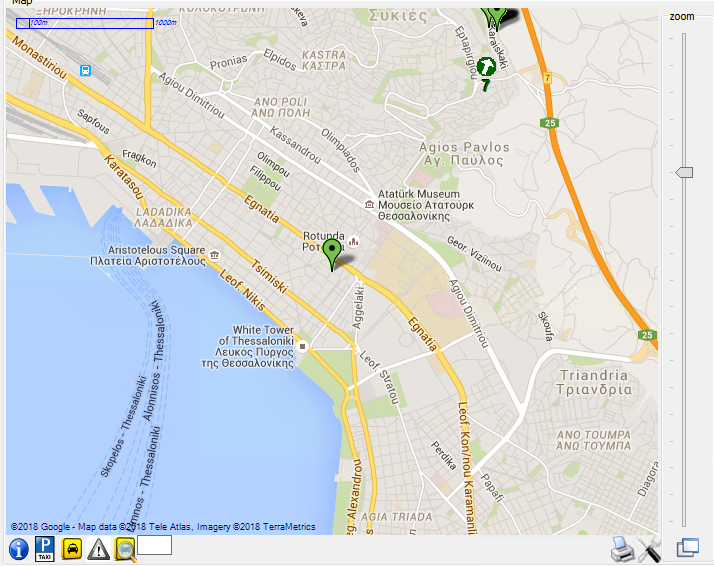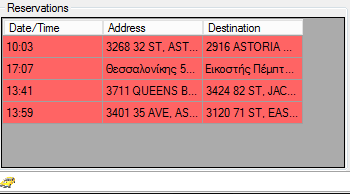Main Toolbars and Functions
This section provides an introduction and overview to main toolbars and functions of the application's central window. The central window of Call Center is the main user interface that provides all the tools and functions needed for the management of incoming calls and car dispatches. The Call Center application is connected to the system's database and to the central communication server (Taxi Server).
 Standard Menu BarThe Menu Bar includes the File, Options, Data, Reports, Car Server and Help Menus. These menus provides all the needed tools to manage options, setup parameters and perform basic administrative tasks.
|
 Car FrameIn the CAR frame, you can check the CB UHF communication between cars and Call Center. The frame indicates the unique CB number of the car that transmit a UHF signal to the center at any particular time. The CAR frame is automatically updated, provides real time information and also keeps data history report.
|
 Main ToolbarThe Main Toolbar includes all the tools needed to work with drivers, cars, penalties, appointment, stands, POIs and statistics. Each tool opens a special form for data entry and management.
|
 Status PanelThe Call Status panel is an auto-updated frame that shows the current status of your device (call center work place) and the current date/time. In the Calls Status Frame you can check in real time the number of your waiting calls, the number of calls being in process, your status and the number of missed calls. In alarm mode the date frame becomes red and shows the car ID in alarm.
|
 Call Management FormThe Call Management form consists off an information entry form and all the needed tools for the incoming calls management . You can use the form to entry all the relative information of an incoming call or to retrieve information for calls, searching in call history database. When you answer an incoming call, the call management frame activates to handle the call's parameters and serve the call to the dispatch system.
|
 Callcenter Calls / Missed CallsThis specific table has two different views, one for the Callcenter calls and another for the Missed calls, which are switched according to your request. The Callcenter Calls table shows in real time the online calls that are waiting to be served. The Missed Calls Table shows the unanswered calls that reach the call center.
|
 Map FrameThe Map Frame provide a geographic map with multi-layers, powered by Google Maps. The default map extent usually covers the service area of the car base, which has been defined at the installation process. Stands and responsibility zones for each stand, as well as Points of Interest, and the current location of cars appear on the map.
|
 Incoming Messages TableThe Incoming Messages Table displays in rows the messages that the call center receives from drivers while they are serving a call. This table is a look up table that only displays in real time the incoming unread messages that have been sent from the driver's connected tablets via the IQTaxi Driver Application.
|
 Table of Calls and EventsIn Calls and Events Table appear all the active calls and events that are currently be served from the system, providing also information about their current status.
The table is automatic updated providing real time data. You can observe the status of each call during the dispatching procedure, be informed for the dispatch results and handle unsuccessful calls or other procedure problems.
|
 ReservationsThe Reservation table shows the information of all the booked reservations that have been planned for a later time. The table is automatic updated so you can check in real time the upcoming reservations and serve them to the dispatch system in appropriate time.
|
 Taxi Server Status
Taxi Server's status icons display whether the application is currently connected with the system's main Server (TaxiServer). When the Taxi Server is active and connected to the application, the icon is flashing yellow  . Otherwise, when a connection is not established, the icon turns grey. 
|
|
Attention! The Taxi Server status must be always active (flashing icon).
If not, there is connection problem that need to be resolved immediately. To address the problem, restart TaxiServer from the application menu (Application Menu) or contact your system Administrator.
|
|
|







